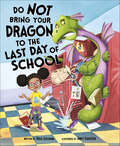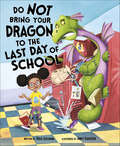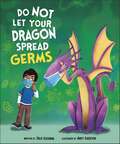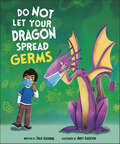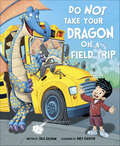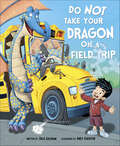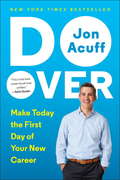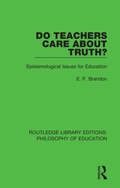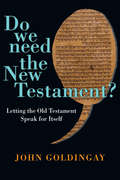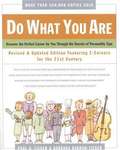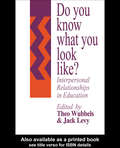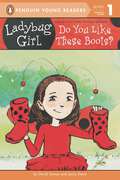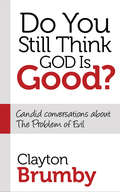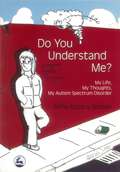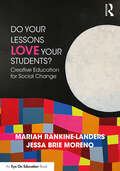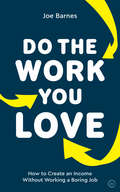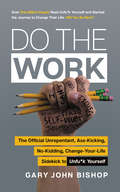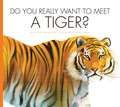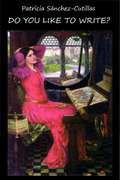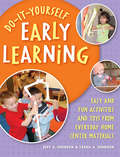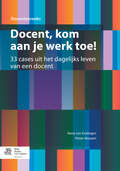- Table View
- List View
Do Not Bring Your Dragon to the Last Day of School
by Julie GassmanAnother year of learning is in the books, and it's time to celebrate! Dragon loves parties and picnics and playgrounds and is ready to celebrate too. But is it smart to bring a dragon to the last day of school? Find out if Dragon gets to join in the fun in this hilarious picture book by Julie Gassman (Do Not Bring Your Dragon to the Library, Do Not Take Your Dragon to Dinner, Do Not Bring Your Dragon to Recess, and Do Not Take Your Dragon on a Field Trip). The interactive story is perfect for reading out loud at storytime!
Do Not Bring Your Dragon to the Last Day of School
by Julie GassmanAnother year of learning is in the books, and it's time to celebrate! Dragon loves parties and picnics and playgrounds and is ready to celebrate too. But is it smart to bring a dragon to the last day of school? Find out if Dragon gets to join in the fun in this hilarious picture book by Julie Gassman (Do Not Bring Your Dragon to the Library, Do Not Take Your Dragon to Dinner, Do Not Bring Your Dragon to Recess, and Do Not Take Your Dragon on a Field Trip). The interactive story is perfect for reading out loud at storytime!
Do Not Bring Your Dragon to the Last Day of School
by Julie GassmanAnother year of learning is in the books, and it's time to celebrate! Dragon loves parties and picnics and playgrounds and is ready to celebrate too. But is it smart to bring a dragon to the last day of school? Find out if Dragon gets to join in the fun in this hilarious picture book by Julie Gassman (Do Not Bring Your Dragon to the Library, Do Not Take Your Dragon to Dinner, Do Not Bring Your Dragon to Recess, and Do Not Take Your Dragon on a Field Trip). The interactive story is perfect for reading out loud at storytime!
Do Not Let Your Dragon Spread Germs
by Julie GassmanYour dragon loves to hug and high-five and shake hands and sing and blow bubbles and share happiness everywhere she goes. Dragons want to spread joy to everyone! But some of those actions are also spreading germs. It’s time to wash your hands, mask up, and teach your dragon how to share joy in a safe and healthy way. Author Julie Gassman uses rhyming text, relatable examples, and a diverse cast of characters to teach kids about germs in the sixth book in the Do Not Take Your Dragon picture book series.
Do Not Let Your Dragon Spread Germs
by Julie GassmanYour dragon loves to hug and high-five and shake hands and sing and blow bubbles and share happiness everywhere she goes. Dragons want to spread joy to everyone! But some of those actions are also spreading germs. It’s time to wash your hands, mask up, and teach your dragon how to share joy in a safe and healthy way. Author Julie Gassman uses rhyming text, relatable examples, and a diverse cast of characters to teach kids about germs in the sixth book in the Do Not Take Your Dragon picture book series.
Do Not Let Your Dragon Spread Germs
by Julie GassmanYour dragon loves to hug and high-five and shake hands and sing and blow bubbles and share happiness everywhere she goes. Dragons want to spread joy to everyone! But some of those actions are also spreading germs. It’s time to wash your hands, mask up, and teach your dragon how to share joy in a safe and healthy way. Author Julie Gassman uses rhyming text, relatable examples, and a diverse cast of characters to teach kids about germs in the sixth book in the Do Not Take Your Dragon picture book series.
Do Not Take Your Dragon on a Field Trip
by Julie GassmanThings really heat up when you bring your dragon on a field trip to the fire station. Between the bus ride and rules and the fire trucks and hoses, there are lot of things that could go wrong. Stop, drop, and roll into this humorous picture book by Julie Gassman (Do Not Bring Your Dragon to the Library, Do Not Take Your Dragon to Dinner, and Do Not Bring Your Dragon to Recess) to find out if dragon survives his first field trip.
Do Not Take Your Dragon on a Field Trip
by Julie GassmanThings really heat up when you bring your dragon on a field trip to the fire station. Between the bus ride and rules and the fire trucks and hoses, there are lot of things that could go wrong. Stop, drop, and roll into this humorous picture book by Julie Gassman (Do Not Bring Your Dragon to the Library, Do Not Take Your Dragon to Dinner, and Do Not Bring Your Dragon to Recess) to find out if dragon survives his first field trip.
Do Over: Make Today the First Day of Your New Career
by Jon AcuffFrom the New York Times-bestselling author of Quitter and Start comes the definitive guide to getting your dream job.When you don't like your job, Sunday isn't really a weekend day. It's just pre-Monday. But what if you could call a Do Over and actually look forward to Monday?Starting on the first day you got paid to scoop ice cream or restock shelves, you’ve had the chance to develop the four elements all great careers have in common: relationships, skills, character, and hustle. You already have each of those, to one degree or another. Now it’s time to amplify them and apply them in a new way, so you can call a Do Over on your career, at any age. You’ll need a Do Over because you’ll eventually face at least one of these major transitions: • You’ll hit a Career Ceiling and get stuck, requiring sharp skills to free yourself. • You’ll experience a Career Bump and unexpectedly lose your job, requiring strong relationships to survive. • You’ll make a Career Jump to a new role, requiring solid character to push through uncertainty and chaos. • You’ll get a surprise Career Opportunity, requiring dedicated hustle to take advantage of it. Jon Acuff’s unique approach will give you the resources to reinvent your work, get unstuck, and get the job you’ve always wanted!
Do Teachers Care About Truth?: Epistemological Issues for Education (Routledge Library Editions: Philosophy of Education #2)
by E. P. BrandonThis book, first published in 1987, examines the notion of truth and then discusses knowledge and the way in which much of our knowledge revises or rejects the common-sense we start from. The author argues that our knowledge is not as secure as some would like to think and that there are important limits to the possibility for explanation. He shows how values permeate our ordinary thinking and argues against the objectivity of these values, showing the practical consequences of this argument for teaching in schools. This stimulating approach to a fundamental educational issue does not require previous experience of formal philosophy and will be useful to both education students and teachers in schools.
Do We Need the New Testament?: Letting the Old Testament Speak for Itself
by John GoldingayDo we need the Old Testament? That's a familiar question, often asked. But as an Old Testament scholar, John Goldingay turns that question on its head: Do we need the New Testament? What's new about the New Testament? After all, the Old Testament was the only Bible Jesus and the disciples knew. Jesus affirmed it as the Word of God. Do we need anything more? And what happens when we begin to look at the Old Testament, which is the First Testament, not as a deficient old work in need of a christological makeover, but as a rich and splendid revelation of God's faithfulness to Israel and the world? In this cheerfully provocative yet probingly serious book, John Goldingay sets the question and views it from a variety of angles. Under his expert hand, each facet unfolds the surprising richness of the Old Testament and challenges us to recalibrate our perspective on it.
Do What You Are: Discover The Perfect Career For You Through The Secrets Of Personality Type (3rd Edition)
by Barbara Barron-Tieger Paul D. TiegerDo What You Are has already helped more than half a million people find truly satisfying work. After helping you discover your Personality Type, it provides real-life case studies of people who share your Type and introduces you to the key ingredients your work must have for it to be truly fulfilling. Whether you're a recent college graduate, job seeker, or mid-life career switcher, this lively guide will help you discover the right career for you. Using workbook exercises and explaining specific job-search strategies, Do What You Are lists occupations that are popular with your Type and offers a rundown of your work-related strengths and weaknesses. It also shows, step by step, how to use your unique strengths to customize your job search, ensuring the best results in the shortest period of time. This time-honored classic has been updated to include jobs in today's hottest growing markets, such as e-commerce, biotechnology, new media, and telecommunications.
Do You Know What You Look Like?: Interpersonal Relationships In Education
by Jack LevyMuch of the work in this book has originated from an international project called "Education for Teachers". Educational researchers from Holland, USA, Australia and Israel look at an important element of teacher behaviour - that is the interpersonal actions which create and maintain a positive classroom atmosphere. The book uses systems theory and family therapy to analyze what happens in classrooms, looking at classes as "big families". It provides a simple way to collect feedback from participants in communication in education (students, teachers, principles, student-teacher supervisors). Thus for example, differences between students' perceptions and the teachers self-perception of the teacher communication style are are formed. This feedback can be used to improve teaching. The book reviews research on communication styles of teachers in secondary education with the help of the questionnaire on teacher interaction and includes implications for teacher programs.
Do You Like These Boots? (Ladybug Girl)
by Jacky DavisLadybug Girl has outgrown her favorite pair of boots! So her mom takes her to the shoe store to buy another pair. Children will learn their colors with Ladybug Girl as she tries on new boots--until she finds the perfect pair!
Do You Really Want to Visit a Wetland? (Into Reading, Read Aloud Module 7 #3)
by Bridget Heos Daniele FabbriNIMAC-sourced textbook
Do You Still Think God Is Good?: Candid Conversations about the Problem of Evil
by Clayton BrumbyHow does God's existence make sense in light of the evil and suffering we see all around us? This is a conversation between two and then three evangelical Christian college students, an atheist, a Jew, and a Christian youth minister.
Do You Understand Me?: My Life, My Thoughts, My Autism Spectrum Disorder
by Sofie Koborg BrosenSofie Koborg Brøsen is eleven years old and, like other children of her age, goes to a mainstream school, loves reading comics and being with her family and her cat, Teddy. But Sofie is not the same as everyone else - she has autism spectrum disorder. Fed up with being misunderstood by her classmates, she has written a book about her world so others can learn to understand her, and vice versa. Sofie describes her day-to-day life in clear, unambiguous language and tells readers about things she finds difficult: being given too many instructions, disruptions to her routine, being teased, strong lights and smells and too much noise. She also tells about what she really likes - feeling accepted by other children, reading, nature, her autism camp and her cat. This fully illustrated book has already attracted much positive attention in Denmark. It is a readable insider's view of life as a child with autism attending a mainstream school and will be an invaluable resource in helping other children to understand their classmates with autism spectrum disorders. Teachers, parents, carers, support workers, children with autism spectrum disorders and their classmates will find this an entertaining, informative and attitude-changing read.
Do Your Lessons Love Your Students?: Creative Education for Social Change
by Mariah Rankine-Landers Jessa Brie MorenoStrengthen your culturally responsive teaching by designing curricula that leads to equitable, humanized outcomes. In this powerful new book, Jessa Brie Moreno and Mariah Rankine-Landers reveal how artistic research and creative inquiry across subject areas and grades can help you access your learners’ collective wisdom and potential. Moreno and Rankine-Landers describe the SPIRAL framework for centering culturally responsive teaching and learning through the arts, showing how and why these iterative processes lead to liberatory outcomes. You’ll learn how to use creative inquiry to address power dynamics in teaching and learning, and how to critically reflect on your curriculum, including investigating whose narratives are centered, whose have been erased, and which marginalized stories can be brought forward. You’ll also find out how to alter the learning space to set a container for creative practice, which is key to navigating cultural shifts, building trust, and setting a collaborative and collective mindset. The book offers a variety of practical activities you can implement right away, such as using visual art making, writing, and storytelling as prompts to activate meaning making and to disrupt unconscious biases, as well as using creative dialogue and character development for embodied learning, introspection, and identification. With the addition of this book to your professional library, you’ll have new tools for building belonging and justice, and engaging all students through artistic research, dialogue, and deep listening.
Do Your Lessons Love Your Students?: Creative Education for Social Change
by Mariah Rankine-Landers Jessa Brie MorenoStrengthen your culturally responsive teaching by designing curricula that leads to equitable, humanized outcomes. In this powerful new book, Jessa Brie Moreno and Mariah Rankine-Landers reveal how artistic research and creative inquiry across subject areas and grades can help you access your learners’ collective wisdom and potential. Moreno and Rankine-Landers describe the SPIRAL framework for centering culturally responsive teaching and learning through the arts, showing how and why these iterative processes lead to liberatory outcomes.You’ll learn how to use creative inquiry to address power dynamics in teaching and learning, and how to critically reflect on your curriculum, including investigating whose narratives are centered, whose have been erased, and which marginalized stories can be brought forward. You’ll also find out how to alter the learning space to set a container for creative practice, which is key to navigating cultural shifts, building trust, and setting a collaborative and collective mindset. The book offers a variety of practical activities you can implement right away, such as using visual art making, writing, and storytelling as prompts to activate meaning making and to disrupt unconscious biases, as well as using creative dialogue and character development for embodied learning, introspection, and identification. With the addition of this book to your professional library, you’ll have new tools for building belonging and justice, and engaging all students through artistic research, dialogue, and deep listening.
Do the Work You Love: How to Create an Income without Working a Boring Job
by Joe BarnesTaking the reader on a journey from discovering a marketable passion to generating an income from it, this book is a practical guide to tackling one of the key questions of our era: how to make a living doing the thing you love.Aimed at all those who want their work to be fun and fulfilling, and who feel they might have a unique gift or message to share with the world, this is an amazingly effective guide to making money doing what you love. It is the only book to take readers through the whole process of creating an income from a passion, identifying which interest they could monetize, choosing a bespoke path and learning how to become an expert in their chosen field.Part 1 explains how to discover a marketable passion with the help of the Dream Job Chart, which guides you in assessing your business ideas, skills and the causes you are passionate about. Once you have clarity on your passion, Part 2 describes the three possible paths to creating an income from it, offering inspiring examples of both famous and everyday people who have successfully followed each path. The Adventurer's Path is for those of a braver disposition and with few family commitments. The Strategist's Path is for those with patience, flexibility and a lower tolerance for risk. The Grinder's Path is for those who feel a need to continue with their present work while also pursuing their dream. Finally, Part 3 explores the four stages to becoming an expert in your chosen field, so that people will pay you for your skill or product. Along the way you will learn: • Why bad luck can't stop you • the right time to quit your job • how to use freelancing or consultancy to help you reach your goal • how to make progress with your passion even if you are working full-time • what to do if you're over 50 and want to create an income from your passion • and much, much more!
Do the Work: The Official Unrepentant, Ass-Kicking, No-Kidding, Change-Your-Life Sidekick to Unfu*k Yourself (Unfu*k Yourself series)
by Gary John BishopBased on the New York Times bestseller Unfu*k Yourself comes an all new book of prompts, questions, and exercises, giving you the tools to intentionally commit to finally unfu*king your life.In Unfu*k Yourself, Gary John Bishop inspired people to put his words into action to transform their fu*king lives. Through seven paradigm shifting assertions such as: “I am wired to win,” “I embrace the uncertainty” and “I expect nothing and accept everything,” Bishop helped millions of readers to move past their self-imposed limitations.Still, Bishop knows it’s hard to go from reading the book, feeling inspired, and then actually doing the necessary work. That’s where Do the Work comes in: it’s the kick in the ass you need to get moving and create the life you want. The workbook drills down into three categories — self, people, and purpose — to help you identify and remedy the challenges that frustrate and often cripple us. Filled with entirely new material, including personalized prompts and exercises with ample lined space to journal and process, Do the Work expands the lessons in Unfu*k Yourself, giving you the tools to intentionally commit to taking on your life. “This is a personal workshop for your brain, a legit resource where you can work your life out, what matters to you, what’s going to make the biggest difference and empower you to act in ways that make some palpable change to the direction your life is currently taking.”The truth will set you free, right? So what are you waiting for?
Do you Really Want to Meet A Tiger
by Cari MeisterA child goes on an adventure to Russia as a junior researcher to study tigers in the wild, and learns about this endangered species.
Do you like to write? (Creative writing nº #1)
by Patricia Sánchez-CutillasThis is an essential creative writing manual for all those people who want to initiate themselves or deepen themselves in creative writing, and it is a delicious book for those who are book lovers. It's contents are: to give a soul to your character, add a morbid touch to our characters, our character's dreams, oneiric metaphor in our narration, the smell of our stories, narration through colours and the beasties. At the end of each chapter there are some exercises for you to put into practise what you have learnt, although I prefer to call them artistic election.
Do-It-Yourself Early Learning
by Jeff A. Johnson Tasha A. JohnsonMaking learning a hands-on experience, Do-It-Yourself Early Learning shows home child care providers how to find and use many of the inexpensive--and often overlooked--building, home-repair, and construction materials available at local hardware stores and home centers to create fun activities and toys that promote play, exploration, and discovery.This innovative guide takes teachers on a journey through the aisles of the local home center to help them find creative ways to teach young children to build, interact, and learn from a wide variety of materials--from plumbing and electrical supplies to paints and hardware items.
Docent, kom aan je werk toe!: 33 cases uit het dagelijks leven van een docent
by Pieter Mostert René Van KralingenDit boek 'daar zit je dan als docent' richt zich op docenten in het mbo, hbo en wo en helpt docenten bij hun rol als examencommissielid, toetscommissielid, coordinator jaar 1, studieloopbaanbegeleider, toetsontwikkelaar.....rollen die lastig zijn omdat de Onderwijsinspectie meekijkt, de NVAO om rapportages vraagt, het management vanuit cijfers werkt. Kortom een boek wat veel docenten in het beroepsonderwijs zullen pakken omdat de casuïstiek tot herkenning leidt en de oplossingen praktisch en hands-on zijn. Het boek heeft iets van het boek 'eerste hulp bij didactische ongelukken', maar richt zich veel meer op lastige management- en schoolorganisatievraagstukken van docenten, uitgewerkt in enkele tientallen casussen.
